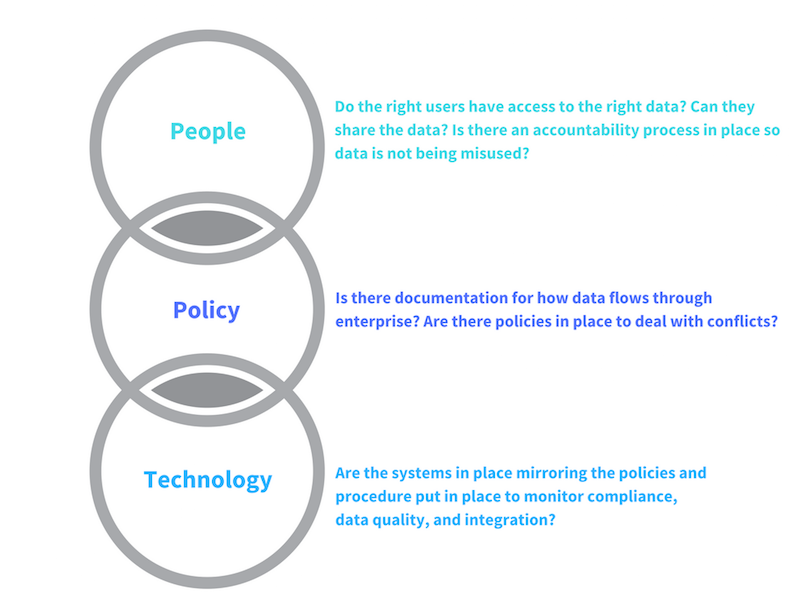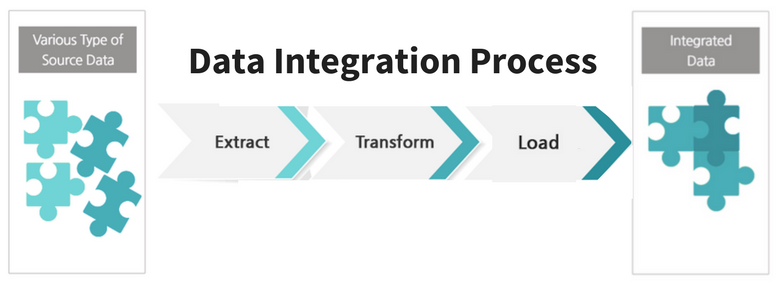Chocolate soufflés are just like data-driven insights — they are rich, transformative and really hard to create.
Anyone who has attempted to make a soufflé knows that in order to make it right, you must follow the recipe exactly, prepare the ingredients properly and be methodical with every step of the process. When prepared correctly, a soufflé is magical, but if there is one small error, the whole thing ends in disaster.
Generating insights from your data works the same way. If you don't have a standard process in place to ensure your data is accurate, usable and secure, your insights will be worthless and even misleading. But unlike the ingredients of a soufflé, managing data is extremely complex and the likelihood of making an error is high.
Leveraging the full value of your data and avoiding costly mistakes starts with a data management and integration (DMI) strategy. Simply put, DMI is a set of policies and procedures meant to provide the right people with timely access to accurate data.
With different types of data now coming from hundreds of internal and external sources, the potential for game-changing insights within your company is only matched by the nerve-racking potential for data chaos.
DMI is more important than ever, so we've broken down the four pillars of data management and integration to get you started.
Data Governance is the Recipe for DMI
You can't make a great soufflé without a clear and detailed recipe that describes exactly how to prepare the ingredients, put them together and bake the final product.
Successfully managing your data starts with a “recipe” called data governance. The role of data governance is to establish standard policies and procedures across the organization that set the parameters for managing all of your data.
A comprehensive data governance plan defines user rights, security policies, and monitors the technologies used to implement the various data procedures.
Data governance is the blueprint on how your company manages its data, focusing on three areas: people, policy, and technology.
Data analysts currently waste most of their time, up to 80%, identifying and processing data to use before doing any analysis. Good data governance should alleviate this by providing the plan and structure for data to be secure, easily found, and shared among people with the appropriate permissions.
Quality Ingredients Always Make the End Product Better
A soufflé is actually not that hard to make, if you know how to prepare the right ingredients. For example, the most important ingredient is egg whites, but if the egg whites have any traces of egg yolk, your soufflé will fail.
Most people don't think about the quality of their data, but, like the tainted egg whites, if your [data is dirty] (https://en.wikipedia.org/wiki/Dirty_data) your insights will not be trustworthy.
Dirty data, such as data with spelling errors or data placed in the wrong field, is a big problem that often goes unnoticed. The power of your analysis is only as good as the quality of your data. If your data is 99% accurate, your insight might be dead wrong.
Without data management and integration policies in place to ensure data quality, you will almost certainly have costly data inconsistencies. Let's say your customer service team receives a complaint from D. Smith, while your marketing team is sending a promotion to a David Smith at the same time. You'll look incompetent sending conflicting messages to the same person.
Beyond setting policies, a DMI program should include a data cleansing process to remedy some of these issues. Data cleansing tools, such as OpenRefine, reconcile and remove duplicate or incomplete data points.
Your data is generated across dozens of touchpoints, which increases this risk of duplication and redundancy. With a DMI approach that ensures your data is clean and ready for use, you will have the confidence to make decisions based on your analyses.
Integration Tools Prepare the Data for Analysis
When you are following a recipe, it is sometimes tempting to skip the instructions and mix all the ingredients together at the same time. If you've done this then you know it never ends well.
Integrating your data is exactly the same. Your data that is coming in across all your applications and legacy systems are not compatible. While you need to combine some of it to run your analysis, you can't just throw it all together willy-nilly and expect accurate results.
Data integration is a complicated endeavor when you consider all the structured and unstructured data available to analyze. There are no one-size-fits-all approaches to data integration, but there are several tools to help automate the integration process of matching, cleaning, and preparing data for analysis.
Data integrations are complex and technical, but at the core are three steps are known as ETL: extraction, transformation, and loading.
- Data extraction is when data is collected from all of the various data sources.
- Data transformation is the process of transforming all of your data into a compatible format, often with the help of a universal data model that defines the datasets with common properties.
- Data loading is when the right data is loaded into the appropriate database, ready for analysis.
You have so many sources of valuable data, but you can't just throw them in an analytics tool and hope to make sense of it all. Your data management and integration strategy should identify the approach and tools necessary to implement a successful integration.
When the ingredients are prepared and combined properly, your chances of accurate insights and a successful soufflé go from good to great.
Protect Your Soufflé at all Costs
After painstakingly preparing your soufflé, you don't want any unauthorized people in the kitchen to mess with it. If you turn your back for one second and someone opens the oven door, both your soufflé and your mood will be deflated.
A core pillar of DMI is data security. Not a week goes by without news of a massive data breach that compromises the personal information of millions of people. Traditionally, companies kept their data safe by securing their perimeter, but data now comes from the outside and employees access sensitive data with devices beyond the firewall.
One of the biggest data risks within your company has to do with access management. A recent survey found that 47% of companies had at least 1,000 sensitive files open to every employee. Unintentionally giving too much access to employees is a very common problem with dire repercussions.
U.S. retailer, Target, had a data breach where over 40 million credit cards including pin numbers were stolen. While there were many reasons for the breach, a report identified that too many people had access to sensitive data, including remote contractors.
Your DMI policy should determine user access across the enterprise, but when you have hundreds or even thousands of potential users, how can you keep track of everyone?
Identity and access management (IAM) tools, like Auth0, are designed to help you manage access to your data. You can authenticate, authorize, and track users that interact with your data at all times and set rules to comply with your data management policies.
For example, your IAM tool enables your team and contractors to access data remotely on any device by adding extra security measures such as automated logouts and multifactor authentification. Even if a device is lost or stolen, the data will be secure.
To Generate Data-Driven Insights, Follow the Recipe
In the same way that a perfectly prepared soufflé can transform a dinner, data-driven insights can give your business a competitive advantage that takes your business to a new level.
When you have DMI policies and procedures in place to make sure your data is accurate, accessible and secure, you will realize the power of your data and make decisions with confidence.










